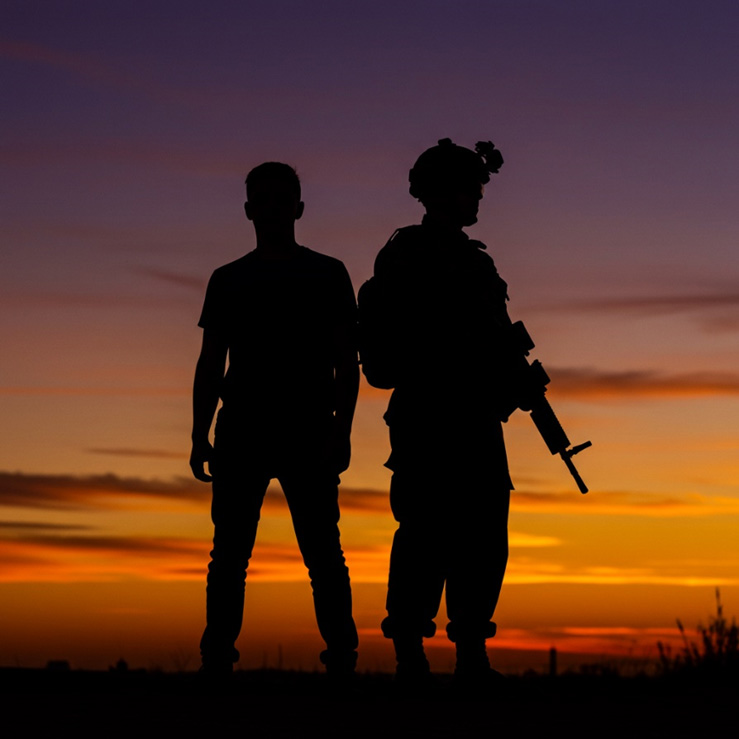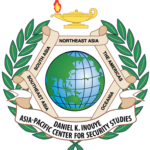
(Image courtesy of the author)
How can the non-warfighter working for the U.S. Department of Defense (DOD) support Secretary of Defense (SECDEF) Peter Hegseth’s renewed emphasis on “lethality?” Many want to support the initiative but aren’t quite sure how. The number of non-warfighters is considerable and includes resource managers, academics, logisticians, economists, political scientists, and countless others who may have never worn a uniform or touched the operational aspects of the defense department. The short answer to the initial question is that everyone can play a role in making our military more lethal.
In my earliest days in the Army, I remember encountering those considered “non-warfighters”—those in support positions. They often told us in combat arms that we couldn’t do our job without them. The communications specialist would say, “You can’t fight the enemy if you can’t make comms with each other.” The transportation officer would say, “You can’t win the fight if you can’t get there on time.” The finance non-commissioned officer would say, “You can’t focus on the enemy if you’re worried about your paycheck.” While I was too proud to admit it back then, the truth was that every one of them was absolutely correct. Across the joint spectrum, our Navy, Air Force, Marine Corps, Coast Guard, and Space Force colleagues all have similar stories relevant to their branch of service. The bottom line is that it takes a team to enable lethal warfighters. Furthermore, no single country fights and wins wars alone. This means that our partners and allies are just as critical in helping the U.S. achieve lethality.
What exactly does it mean to be “lethal?” I would summarize it simply as “the ability to fight and win wars.” Lethality encompasses a broad spectrum of capabilities, from direct combat to the systems, partnerships, ingenuity, creativity, logistics, communications, leadership, platforms, learning, and critical thinking that support combat. Fighting wars is an intellectual endeavor. To be successful, the military must do many things besides shooting. In fact, our military does “other things” far more often than it does actual fighting. For example, we deter malign actors, compete in the gray zone, and build partner capacity.
How exactly can the non-warfighter support lethality? It may involve streamlining processes, eliminating bureaucratic hurdles, accelerating decision-making to get resources to the warfighter more quickly, or enabling allies and partners. Building a truly lethal force encompasses everything from contract approvals to information sharing. For instance, logisticians in the Indo-Pacific might optimize supply chains to ensure that warfighters have equipment and supplies when and where needed across the vast ocean. Similar anecdotes apply to everything from supplying ammunition and spare parts to moving food and medical supplies.
“How might one reduce delays, improve inventory management, and enhance supply chain resilience?” That is the type of question the non-warfighters should be asking themselves. Resource managers, for example, can help ensure that financial resources are allocated efficiently and effectively to support lethal capability development, procurement, and sustainment. This includes cost analysis, identifying areas for savings, and ensuring compliance with regulations. Contracting professionals might seek to streamline the acquisition process to get new technologies and weapons systems into the hands of warfighters as quickly as possible—a challenge that has plagued the U.S. military since the nation’s founding. Perhaps they find new ways to work with industry partners and help ensure that contracts are structured to maximize innovation and performance. Communications professionals may consider new ways to facilitate clear and secure communication between warfighters, commanders, support personnel, and foreign partners. This includes developing and maintaining robust communication networks, ensuring interoperability between different systems, and providing training on communication protocols. Cybersecurity and IT specialists can ensure that warfighters have fast and easy access to information and intelligence. This includes developing and maintaining secure systems, providing training on their use, and protecting against cyber threats. Legal professionals work to identify the growing trend of lawfare used by malign actors while simultaneously ensuring military operations comply with the laws of war. This means advising American and foreign partners on rules of engagement, targeting decisions, and other legal issues that arise during the fog of armed conflict. These are just a few examples of translating non-warfighting expertise into support for DOD lethality.
A Specific Note for DOD Academics and Thought Leaders
For DOD employees in academia—the military academies, DOD schoolhouses, and security cooperation institutions focusing on building partner capacity—some more nuanced advice: It’s crucial to understand that “lethality” isn’t just about firepower. It’s about achieving strategic objectives. Our military and partners must be educated, agile, critical thinkers. DOD academic professionals contribute to this broader definition in numerous ways.
With an awareness of global trends and projections for the future, academics help inform our most senior military and civilian leaders and policymakers. Regional specialists, cultural experts, and political scientists provide crucial insights into understanding and connecting with allies and partners. They understand adversaries' motivations, strengths, weaknesses, and potential courses of action. This knowledge and insight are essential for developing effective national, regional, and sub-regional strategies, which directly impact lethality by preventing miscalculations and ensuring resources are applied effectively. The military's economists may contemplate financial levers tied to security matters in a way that no one else can. It is often said that "economic security is national security." International relations experts inform policymakers on diplomatic and military affairs through research, publications, and teaching. Cyber professionals and intelligence analysts are crucial in protecting critical infrastructure and information systems from attack, as well as supporting offensive strategies. In the modern battlespace, information is a weapon. Work in the information space is essential for maintaining dominance in the physical world. While seemingly counterintuitive to “lethality,” humanitarian and post-conflict stabilization experts are vital to a lethal force. America’s past failures in nation-building have demonstrated that we need expertise in civil-military relations. These skills help prevent conflicts in the first place, build alliances, and help win “hearts and minds” before, during, and after conflict. These are just a few examples of how DOD's academic professionals contribute to overall force modernization, integration, and lethality on the battlefield.
The key for DOD academic professionals is to connect time-tested theories, principles, and frameworks to the practical needs of the warfighter. This can be achieved through collaboration and communication. Academics should actively seek opportunities to collaborate with military personnel and other DOD professionals with operational experience. This can involve participating in joint research projects, attending conferences and workshops, engaging in wargaming, and fostering dialogue with those in uniform. Understanding the warfighter’s perspective is critical. Academics also need to present their ideas in a way that is accessible and relevant to policymakers and military leaders. This means avoiding excessive jargon and focusing on the practical implications of their work. Research should address the most pressing national security challenges facing DOD, such as emerging threats, evaluating strategic effectiveness, and developing tools that will enhance warfighter capabilities into the future. Academic professionals should strive to understand the broader strategic context in which DOD operates, starting with the National Security Strategy and working down to regional, service-specific, and functional strategies. Working for DOD requires understanding the geopolitical landscape, the nature of modern warfare, and the military’s role in achieving national objectives.
To all the non-warfighters reading this, consistently ask yourself key questions: How does your work contribute to the overall mission of the Department of Defense? How can you improve your processes and outputs to make America and its foreign partners more aware, efficient, and effective in integrated deterrence, building partner capacity, and warfighting? What are the biggest challenges facing the warfighter, and how can you contribute to overcoming them? By asking these questions and actively seeking ways to improve our defense enterprise, you directly contribute to DOD’s focus on lethality.
Dr. Jeremiah “Lumpy” Lumbaca, PhD is a retired US Army Green Beret and current professor of irregular warfare, counterterrorism, and special operations at the Department of Defense’s Daniel K. Inouye Asia-Pacific Center for Security Studies. He can be found on X/Twitter @LumpyAsia.
Published: March 6, 2025
Category: Perspectives
Volume: 26 - 2025
Author: Lumpy Lumbaca






Absolutely! Enjoyed the highlight that “lethality” is a collective DOD effort, valuing every role often requiring self-reflection and alignment. Decisively supporting warfighter readiness – through robust equipment, critical information, and ensuring fitness – is paramount. The strategic insights and deep adversary understanding provided by academics are crucial for effective strategy and deserve greater recognition.